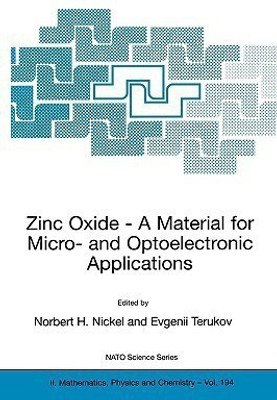Zinc Oxide - A Material for Micro- and Optoelectronic Applications(English, Paperback, unknown)
Quick Overview
Product Price Comparison
Recently, a significant effort has been devoted to the investigation of ZnO as a suitable semiconductor for UV light-emitting diodes, lasers, and detectors and hetero-substrates for GaN. Research is driven not only by the technological requirements of state-of-the-art applications but also by the lack of a fundamental understanding of growth processes, the role of intrinsic defects and dopants, and the properties of hydrogen. The NATO Advanced Research Workshop on "Zinc oxide as a material for micro- and optoelectronic applications", held from June 23 to June 25 2004 in St. Petersburg, Russia, was organized accordingly and started with the growth of ZnO. A variety of growth methods for bulk and layer growth were discussed. These techniques comprised growth methods such as closed space vapor transport (CSVT), metal-organic chemical vapor deposition, reactive ion sputtering, and pulsed laser deposition. From a structural point of view using these growth techniques ZnO can be fabricated ranging from single crystalline bulk material to polycrystalline ZnO and nanowhiskers. A major aspect of the ZnO growth is doping. n-type doping is relatively easy to accomplish with elements such al Al or Ga. At room temperature single crystal ZnO exhibits a resistivity of about 0. 3 -cm, an electron mobility of 2 17 -3 225 cm /Vs, and a carrier concentration of 10 cm . In n-type ZnO two shallow donors are observable with activation energies of 30 - 40 meV and 60 - 70 meV.


